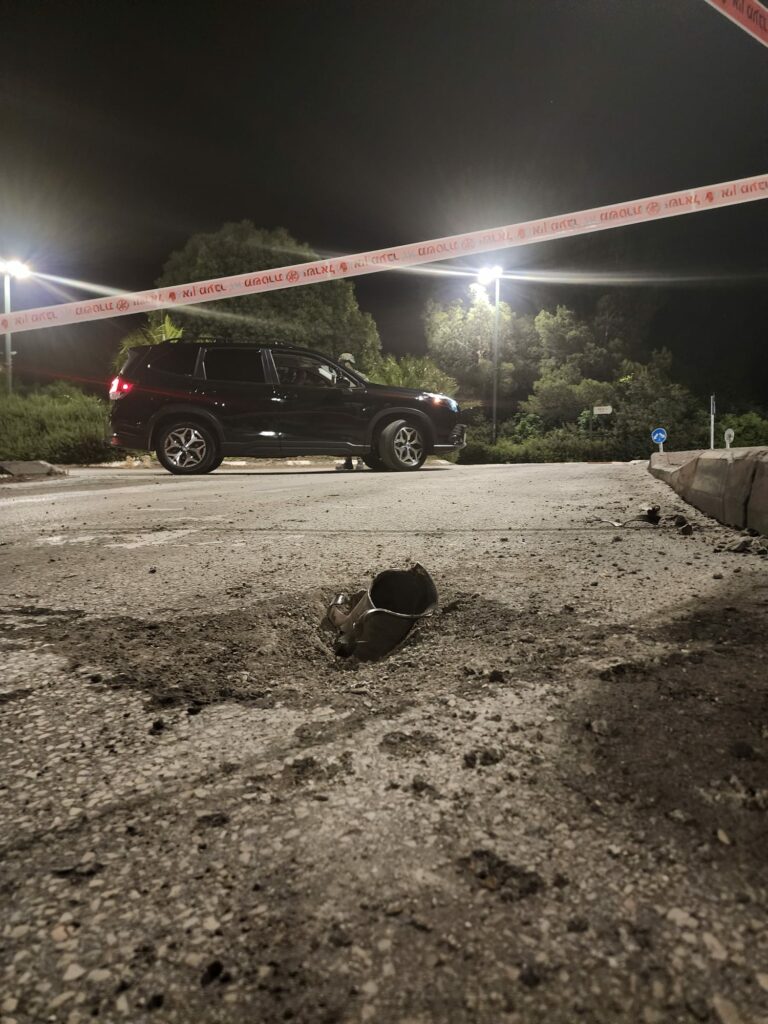Photo credit: Kiryat Shmona municipality spokesman
*Due to the holiday vacation, the next weekly review will published on May 6, 2024
Insights:
1. Hezbollah is increasing its ability to deploy UAVs and carry out strikes using suicide UAVs. Hezbollah’s aerial unit appears to have sustained no major harm. This needs to change, and a major operational effort must be directed at harming it.
2. Just as Iran did not activate Hezbollah as part of its strike on Israel on April 14, 2024, it appears that Hezbollah will not respond to the (April 19, 2024) assault ascribed to Israel in Iran. Although Hezbollah’s assaults against Israel increased this week, the majority of them were in response to IDF attacks in Lebanon.
Attack on Iran
(April 19) An airstrike occurred near the city of Isfahan. According to reports, this was an Israeli response to the Iranian attack on Israel on April 14. According to reports, an air base near Isfahan-Shikari International Airport was attacked. Potential targets at the base are bunkers, aircraft hangars, and air defense systems, including S300 (launchers and radars). The S300 battery’s radar array was reportedly damaged. It should be mentioned that there are additional military locations in the Isfahan region, one of which is an underground ballistic missile facility located west of the city, which we previously covered in video analysis (attached below).
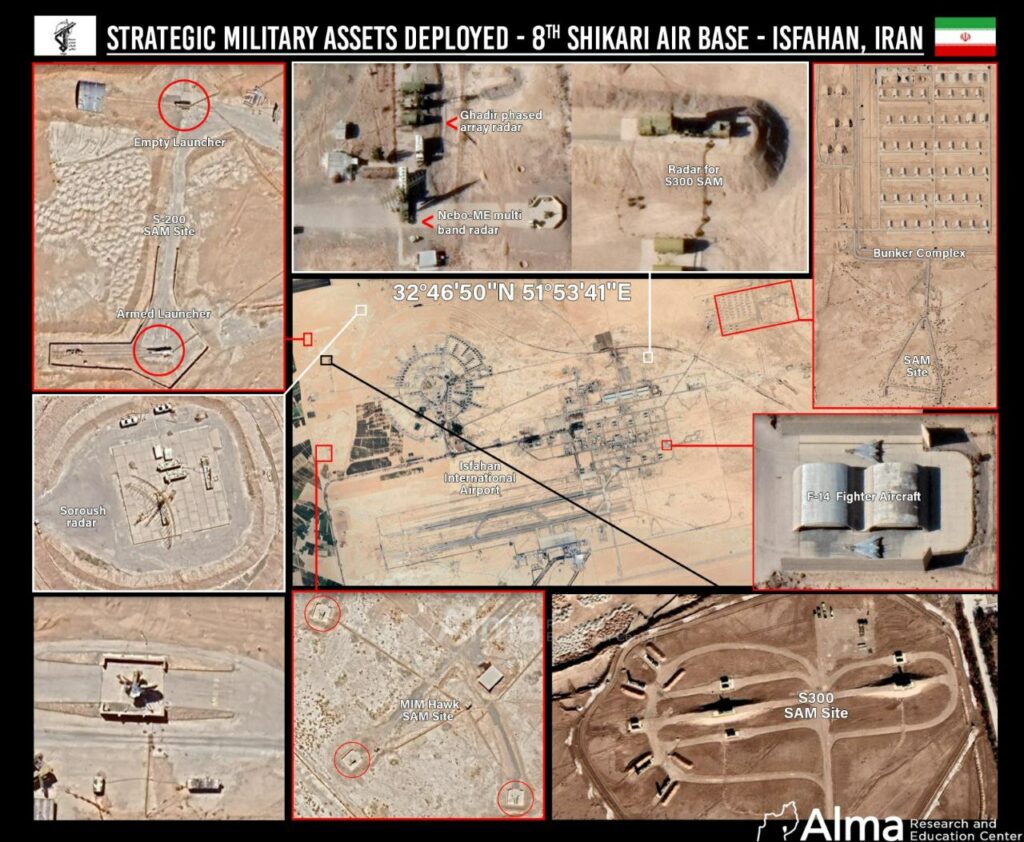
The Lebanese arena:
War data:

In Israel, the government evacuated 43 communities located up to five kilometers from the Lebanese border. A total of about 61,000 citizens. To them were added several thousand more who decided to evacuate independently.
It should be noted that not all Israeli communities have been totally evacuated, and there is still a civilian presence. This is because these communities rely on tourism and agriculture. Farmers come to work on the land, in the orchards, tending to cow and goat herds. Furthermore, some of the communities’ industrial plants are still operational and employ workers from non-evacuated areas. In addition, some of the evacuees returned independently.
The Israeli government has extended the evacuation period until the summer of 2024 (July/August 2024).
Hezbollah has killed 6 Israeli civilians and 1 agricultural worker with foreign citizenship so far. A total of 7 civilians were killed.
Over the last week, (April 15 to April 21), 25 Israelis, including soldiers and civilians, were injured as a result of Hezbollah attacks. 57 attacks have been carried out on the northern border. Hezbollah claimed responsibility for 50 of these strikes, which used high-trajectory missiles (including Grad, Falaq, and Burkan), anti-tank weapons, and unmanned aerial vehicles. No responsibility was claimed for 7 incidents, all of them UAV infiltrations.
This week, the Arab Al-Aramshe, Hanita, Yir’on, Manara, Ibn Menachem, Shlomi, Metula, and Netua communities were targeted with high-velocity fire, anti-tank missiles, and UAVs.
Prominent launching and shooting incidents against Israel:
(April 16) UAV strike in the Israeli community of Beit Hillel resulted in 3 casualties.
(April 16) Grad rocket fire at Kiryat Shmona. 6 rockets landed in the city. According to Hezbollah, the target was a military base.
(April 16) High-trajectory Grad rocket fire into communities in Western Galilee. According to Hezbollah, the target was a military base.
(April 17) For the first time, An Almas-3 anti-tank missile was fired at Meron airbase. This missile has a known range of up to 16 km.
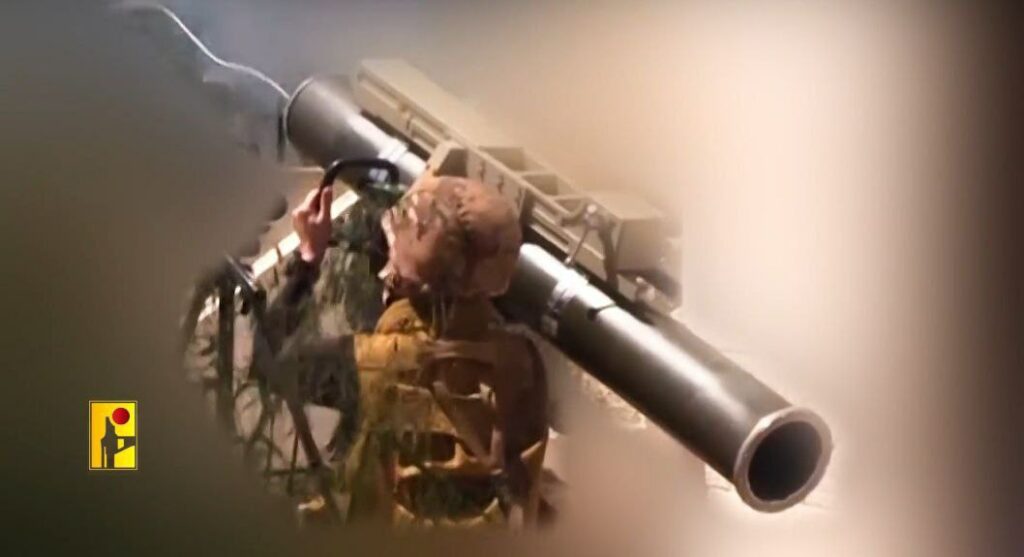
Hezbollah casualties:
Over the past week, a statement was released reporting 10 Hezbollah military operatives were killed. An additional Amal operative was also killed – Hussein Qasim Karsht.
As of October 8, 2023, a total of 284 Hezbollah operatives have been killed. Most of the operatives killed live south of the Litani River (186 operatives killed, constituting 65% of all the operatives killed). Many Hezbollah operatives and their families live in southern Lebanon near the border with Israel. They operate in southern Lebanon as part of Hezbollah’s geographic units (Nasser/Aziz) and Hezbollah’s designated units (Radwan unit), while assimilating into the civilian population (human shield tactics).
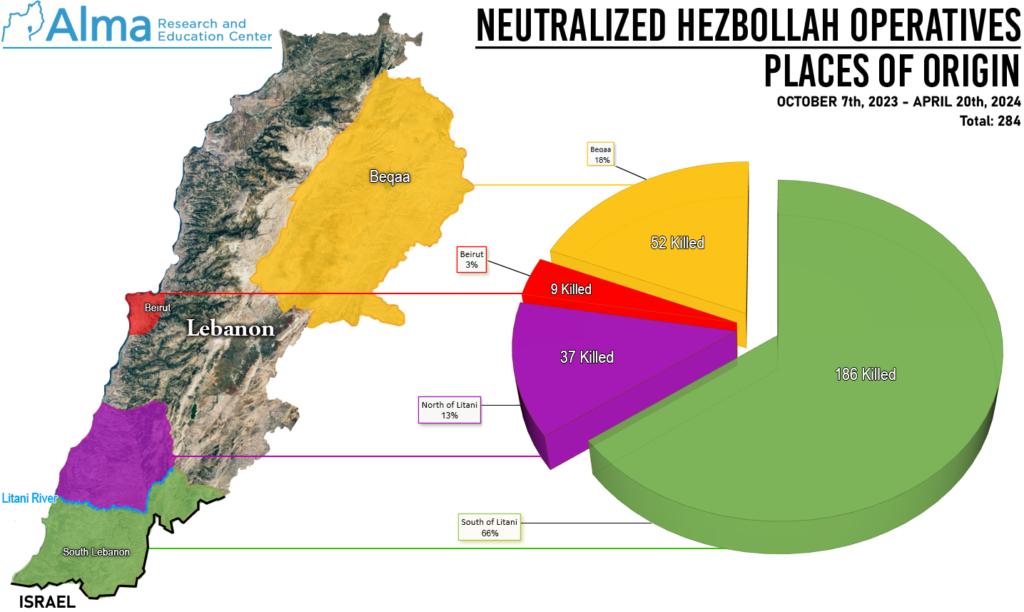
Prominent airstrikes in Lebanon:
(April 16) An attack on a vehicle in Ain Baal, Lebanon, killing Hezbollah coastal commander Haj Ismail Yusuf, aka Abu Ja’far al-Baz. Also killed along with him was an Amal movement operative named Hussein Qasim Karsht.
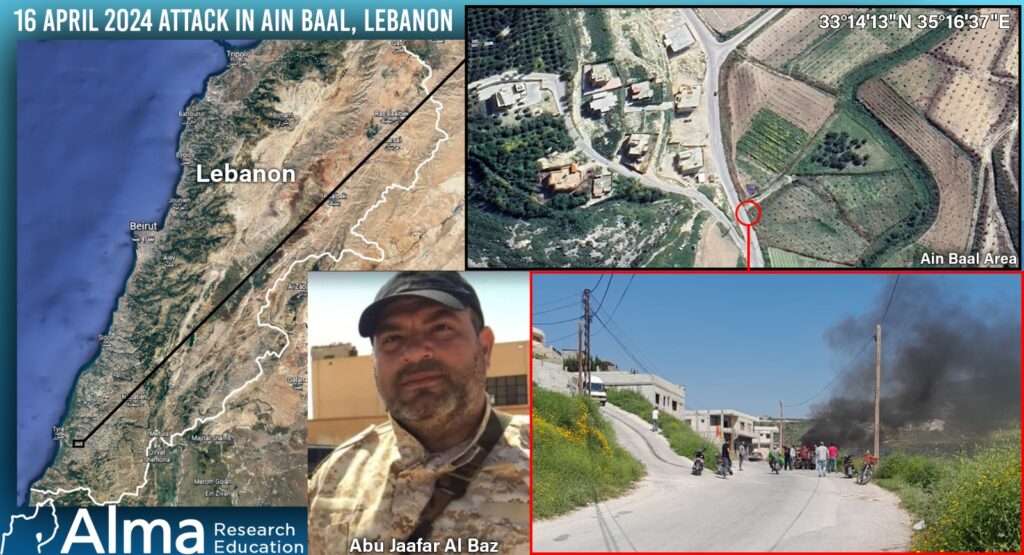
(April 16) An attack on two vehicles near the village of Al-Chehabiyeh, killing Muhammad Hussein Mustafa Schori, commander of Hezbollah’s rocket and missile unit in the western sector of Hezbollah’s Radwan unit, and Mahmoud Ibrahim Fathallah, an operative in Hezbollah’s rocket and missile unit.
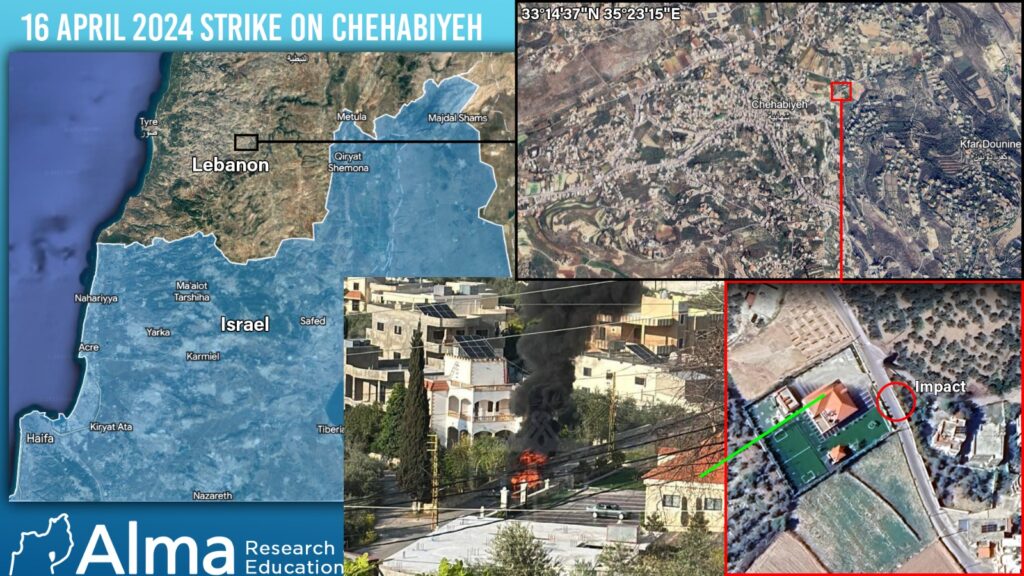

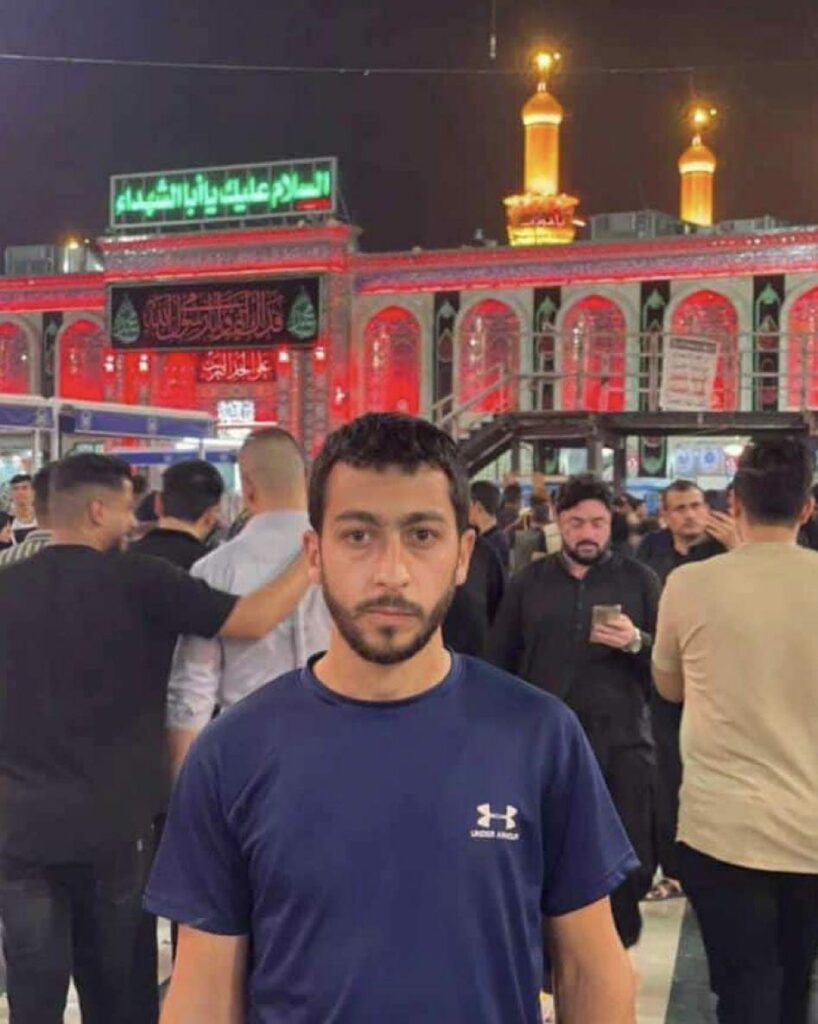
(April 17) An airstrike was launched in the Iaat region, northwest of Baalbek, targeting terrorist infrastructure utilized by Hezbollah’s air defense system. We assumed this strike was retaliation to the UAV strike on Arab Al-Aramshe, and to maintain the aerial equation between Israel and Hezbollah: an attack by UAVs will be answered by an attack on Hezbollah’s aerial system deep within Lebanon. We are familiar with an aircraft landing strip used by Hezbollah’s UAV aerial unit in this area.
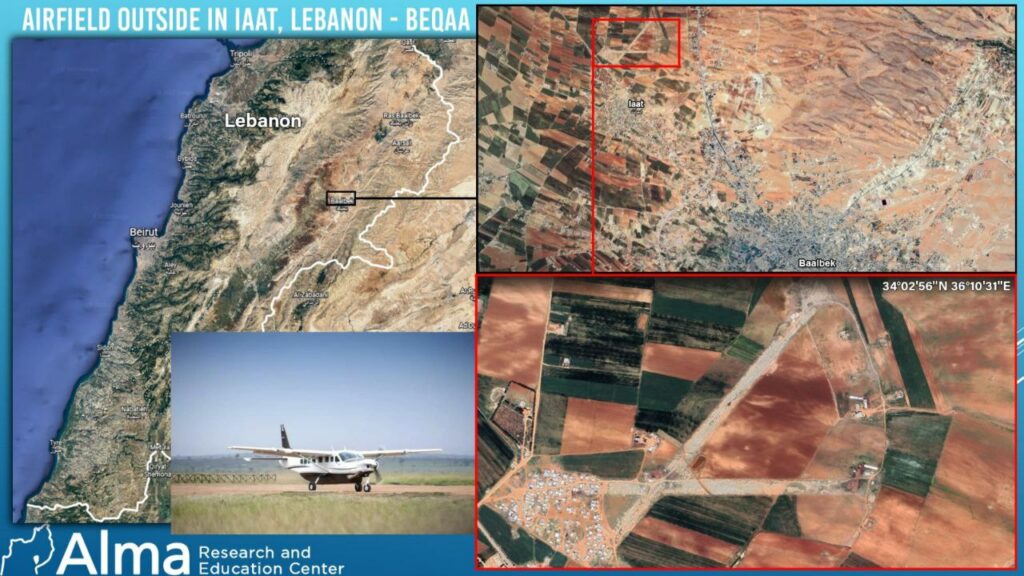
We are also familiar with another landing strip used by Hezbollah’s aerial unit in the Bekaa Valley:
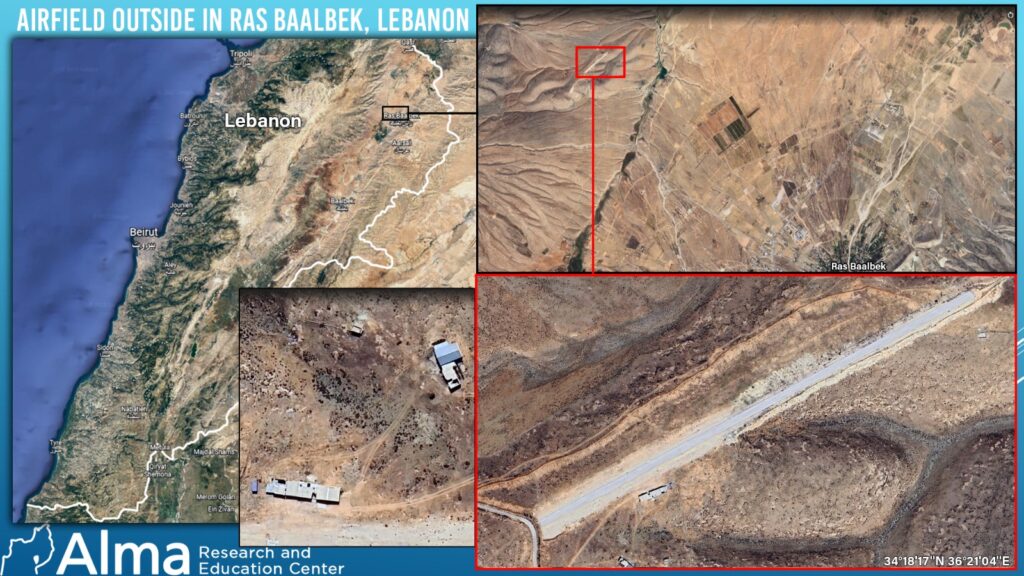
Lebanon – General:
(April 17) Yasser Ajaj al-Kukash, a Lebanese born in 1957 in the village of al-‘Azuniyah (Ali District), was murdered. Kukash’s body was discovered tied up in the basement of a four-story structure in the town of ‘Azuniyah, with items dispersed around, suggesting the possibility of a robbery-murder. The killers reportedly approached Kukash’s residence, pretending to want to rent it. The event was extensively reported and shared on social media. Numerous stories accused Syrian refugees of murder.
The incident made waves in Lebanon because it adds to a slew of crimes committed in recent months, the most notable of which was the murder of Pascal Suleiman, which shook Lebanon and has had long-term security and political ramifications. The murder of Pascal Suleiman generated tensions among the Christian population, Hezbollah, and Syrian refugees in Lebanon, whom Christians blame for the crime.
According to the media, as a result of the widespread outrage, many Lebanese, particularly those close to the victim, took to the streets and attacked Syrian refugees in the town, forcing them to flee their homes. Still, security forces responded quickly to prevent the situation from deteriorating.
(April 17) The Iranian ambassador to Lebanon, Mojtaba Amani, hosted delegations from the Association of Muslim Scholars, Palestinian parties and forces, Lebanese political parties and forces, as well as various personalities, who came to praise the IRGC’s Operation “Sincere Promise” against Israel (the launching of missiles and UAVs at Israel on the night of April 13-14).

The Syrian arena:
Syria – General:
(April 15) The new deputy commander of the Russian Cooperation Center, Yuri Popov, arrived in Quneitra for an introductory visit and met with the governor of the province to discuss cooperation between sister countries Russia and Syria.

(April 17) According to local reports, there were heavy exchanges of fire between two armed groups that signed agreements with the Assad regime in the town of Jassem, Deraa Province, following the arrest of three members of one group by members of the other group.
Shiite Axis – General:
(April 17) Reports of a missile attack by Iranian-backed Iraqi factions on the CONOCO gas field. There are currently no further indications to corroborate these reports.
The most recent attack on US bases in Iraq and Syria, officially reported by US Central Command, took place on February 20. According to various reports, the attacks on the American bases ceased due to direct Iranian instructions to the Shiite militias, against the background of secret agreements between Iran and the United States. It should be noted that at this stage it is unclear whether a decision has been made by the Shiite axis to renew the attacks.
(April 19) The Islamic resistance in Iraq claimed responsibility for attacking the IAF base “Ovda” with UAVs. According to the claim of responsibility, the attack took place on April 15, 2023. No other indications are known in this regard.
(April 20) A large explosion followed by secondary explosions occurred at the Kalso base, south of Baghdad (Babel Province), which belongs to the Al-Hashd al-Shaabi umbrella organization of the Shiite militias in Iraq, operating under the IRGC. The military commander of al-Hashd al-Shaabi, Abu Fadak, was seen arriving at the scene to inspect the damage. Nine militia operatives were injured in the incident. At this stage, the reason for the explosions is unclear: whether it was a local incident (a malfunction in the storage of weapons, for example) or an incident caused by an external attack. According to photos and videos from the scene, at least one large crater is evident. According to their assuming of responsibility, the Shiite militias in Iraq launch UAVs (and even cruise missiles) almost daily at Israeli territory. The Kalso base is located in the southern lanes of Iran’s land weapons corridor, which crosses Iraqi territory.

(April 20) The Islamic resistance in Iraq claimed responsibility for launching UAVs to strike a “vital target” in Eilat as part of its support for Palestinians in Gaza and in reaction to an Israeli attack that violated Iraqi sovereignty. No further indication was reported.
Yemen – Houthi-land:
During the past week, coalition forces managed to strike two UAVs ready for launch that were launched or intended to be launched by the Houthis.
Since October 2023, there have been 111 Houthi bombardment incidents.

